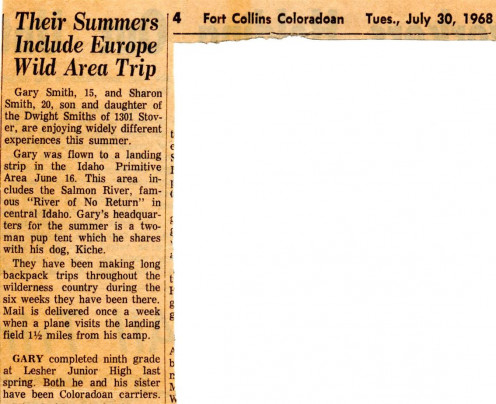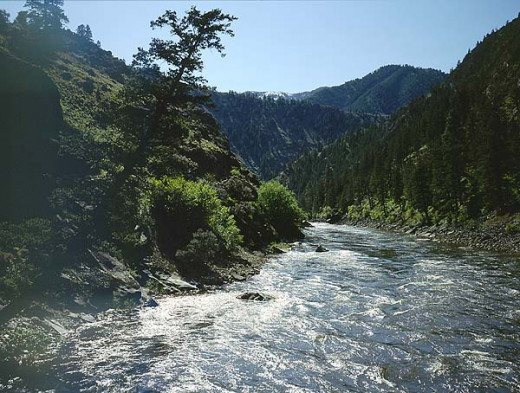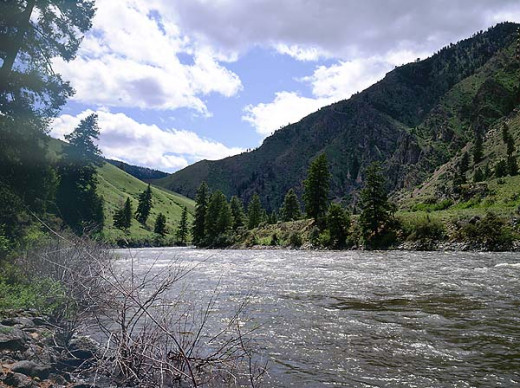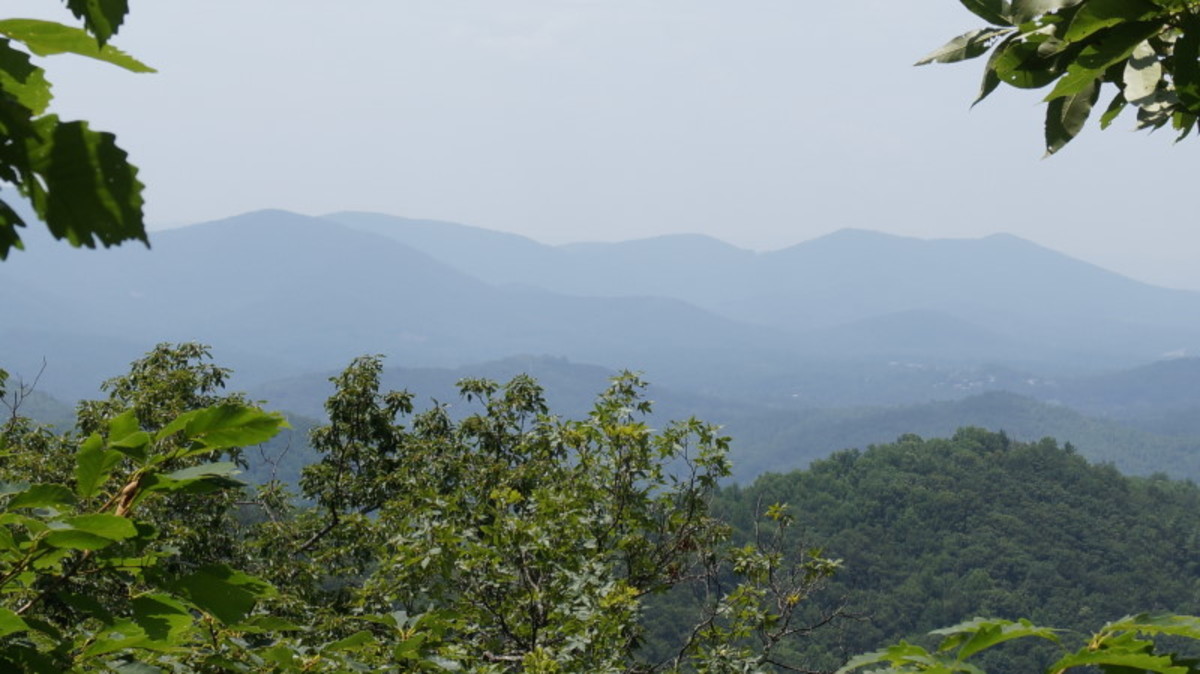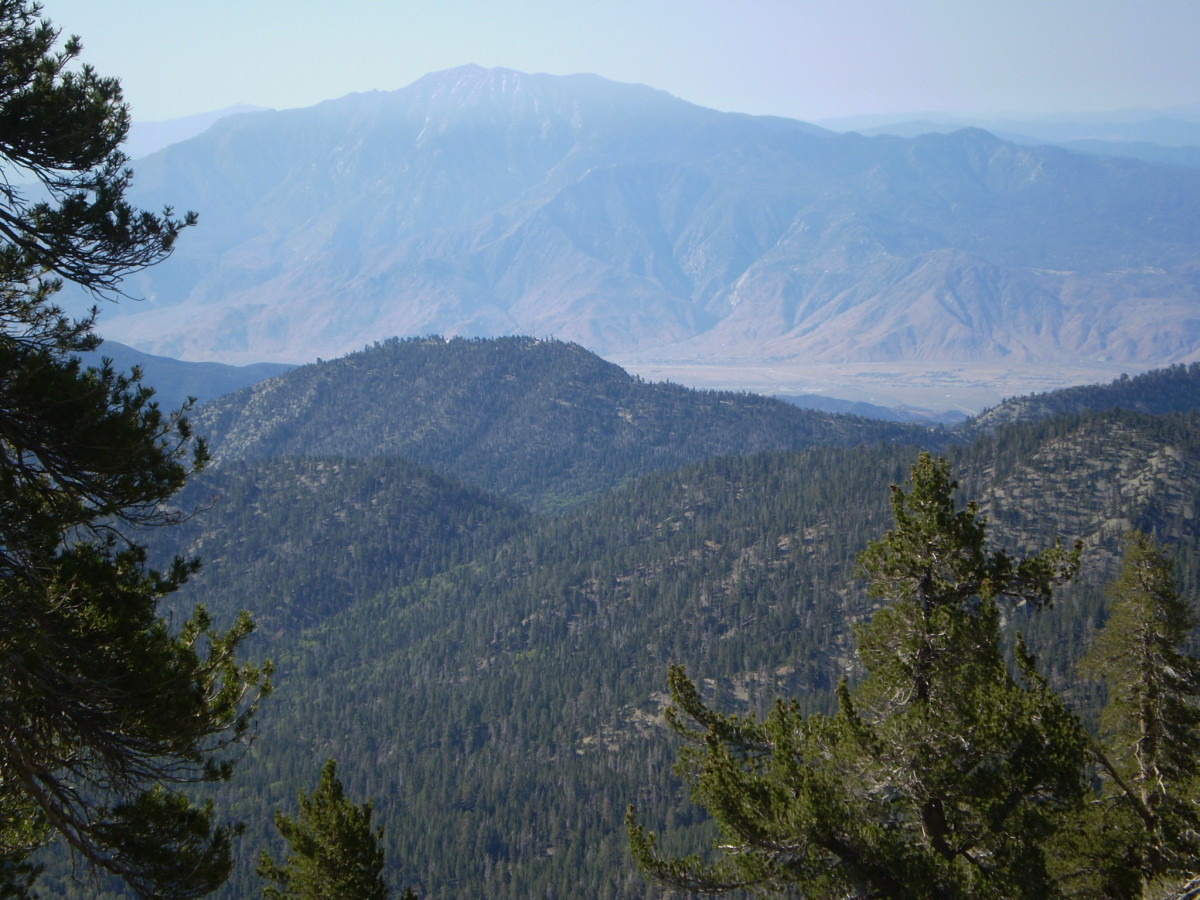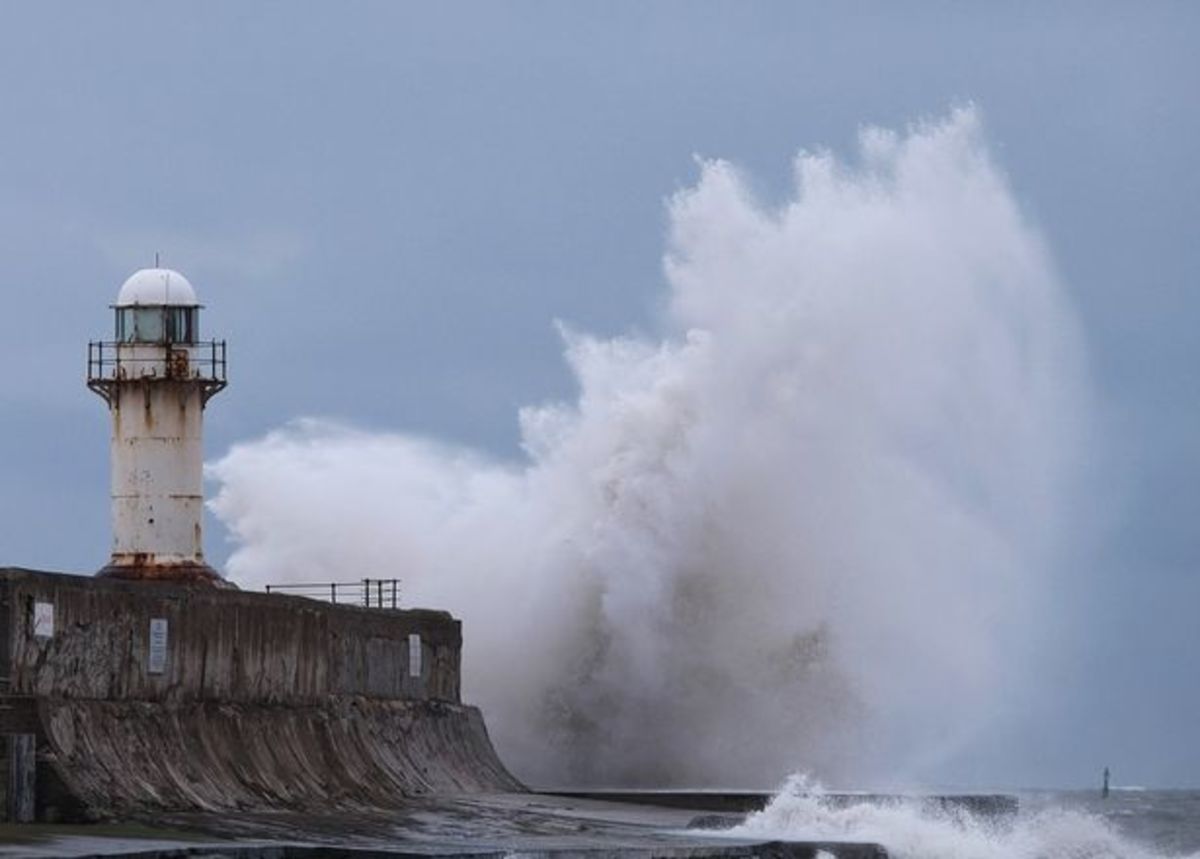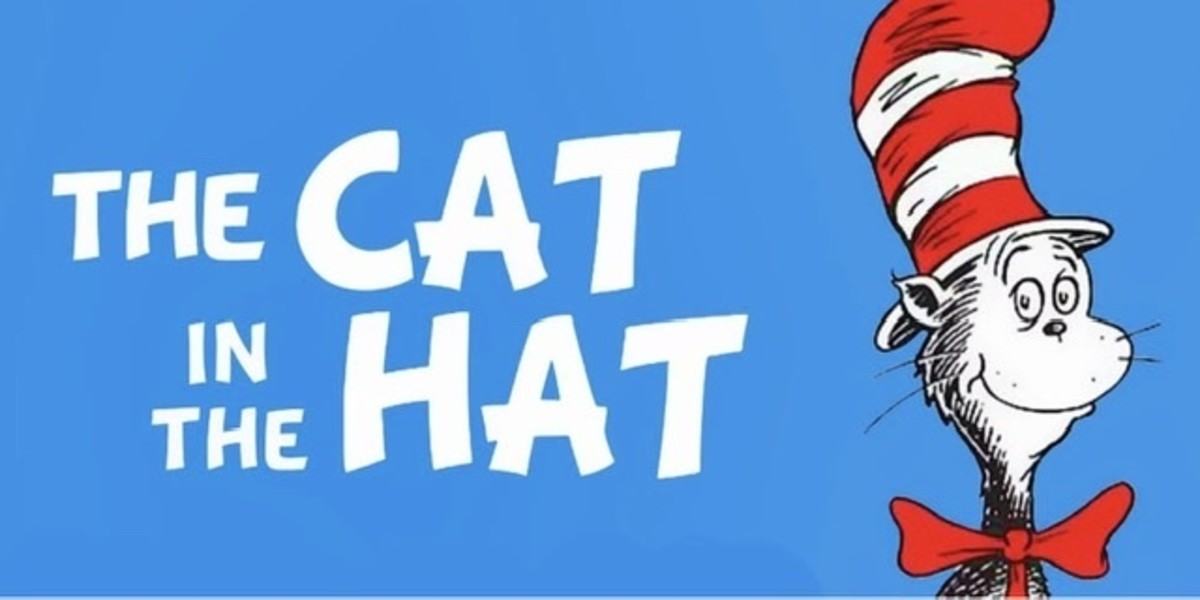Return to the River of No Return
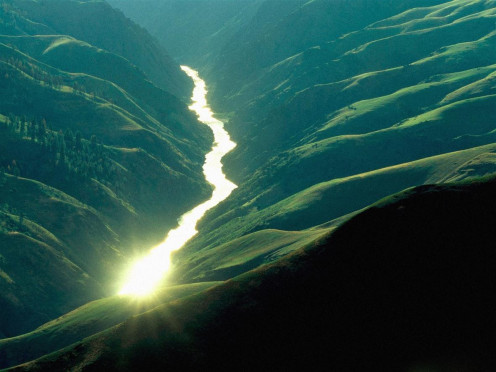
A dry, shuddering sound, vigorous and menacing, came from the direction of my tent. Cold reptilian eyes fixed their stare on me as I approached from the creek below.
I knew what it was, of course, but feared that my dog friend would not and shouted sharply for her to stay back.
The rattlesnake was coiled at the entrance of our dirt-floor tent, shaking its tail in warning.
At the creek I'd been carving on the forked end of a new walking stick. Still shouting at Kiche, I maneuvered around the snake, pinned the body to the ground under the fork, grabbed it closely behind the head and stabbed it through the brain with my carving knife.
Kiche and I had come here by bush pilot one week after my fifteenth birthday. We were dropped over the mountaintops in a sharp descent to a grassy landing strip along the river. The only other way is by hiking the trail for more than thirty miles from the end of the road.
Our tent was pitched at the base of a leaning tree near Cougar Creek. It was an hour’s hike from Jess and Dorothy Taylor, the old-timers who homesteaded at their hunting cabin – and many miles in any direction from other signs of civilization.
After killing the snake, I went on with gathering firewood – my senses on heightened alert. The sun set over the mountains and the high altitude air brought chill bumps to my skin. That night the stars were especially bright against the black void.
Man
Why was a fifteen year old in this remote wilderness, alone with his dog? Well, it had to do with a paper I wrote titled, "Man."
My writing expressed the feelings I held towards mankind and his treatment of animals as objects and possessions and his inhumanity towards his fellow man. It was bound in a black binder when I handed it to my eighth grade science teacher and asked him for confidentiality.
Apparently disturbed by the writing, the teacher took it to the school counselor. They called my parents in for a conference, and I started seeing a psychologist as they feared I was anti-social. Somehow the plan arose to set me in the Idaho River of No Return Wilderness where Dad had done a bighorn sheep study years before. Perhaps by being away from human society for a summer, by myself, I would come to appreciate it more.
In the lower forty-eight, there is not a more raw or remote wilderness. It is rattlesnake country, and home to moose, great herds of elk, bighorn sheep, black bear and wolves. For centuries, up until the 1800s, a peaceful tribe who called themselves "People of the Sun" lived in the river canyons. Over the summer, while hiking the river trails, I killed eight rattlesnakes. Sure it was a contradiction of my principles. But I felt that if I did not kill the rattlers, they would kill Kiche or me. That summer I also found an arrowhead in an Indian mound, entered a cave with primitive paintings and had many dreams in the night.

Return to the River of No Return
Thirty-three years after my summer of '68 in the wilderness, I met my life partner Kati in Ashland, Oregon. She was in America on a tourist visa and could not stay. I had made the choice to go with her, wherever she went. The question was, where? Our choices came to India or Spain. The hub, Is Destiny Real? tells more of the story of our meeting.
Kati had heard me talk about my summer in the wilderness. One day I wore a t-shirt printed with a message from an Idaho river town. Kati said, “That’s it! We’ll go to Idaho and find a clear answer in nature.”
A lot of water had passed under the bridge in the years since my boyhood experience. Through the traumas and choices of life, I had trapped myself in stiff, narrow-minded thinking then broken out of the entrapment to live who I am. After the break-out, Kati and I met. Now we were in a new relationship with an unknown future.
Headwaters
The highway carried us from city to city. A two lane road took us through smaller towns. Then the pavement ended and we followed a dirt road for miles through thick forests until we came to Yellowpine, a settlement with three bars and a few houses. From there it was more dirt road to an outfitter with horses and cabins at the headwaters of Big Creek. And then we hefted our backpacks and hiked.
At times I felt overwhelmed by the wonder of being back in this remote wilderness which had appeared many times in my dreams since that summer long ago.
A few hours in, we saw an unusual circle of white daisies in a grassy patch between us and the river. We decided to make the widened, flat area around it our base camp.
Kati pitched her tent under the trees, and I nearer the river’s edge. The landscape had been changed by an earthquake which brought down parts of the mountainside. Already we’d seen a huge black moose tramping through the woods above us, a black bear cub curled around a tree, and signs of a wolf kill on the trail. I found later, on a hike deeper into the wilderness, that the forest had overgrown the small cabin of an old river hermit I had visited as a boy.
Be Alert
Returning to our camp site from a day hike late one afternoon, I heard the inner voice say “Be alert.” When we retired into our tents that night, I fell easily into sleep, lulled by the sound of the river. I was awakened suddenly around midnight when Kati burst into my tent. She was frantic and disoriented. My inner calmness took over and I eased her into a calm space. We didn’t discuss what had happened until the next morning when we sat together on a log.
Without knowing the history, we felt that the clearing where we camped was connected with a battle. And the psycho-emotional energies of the dying wounded were still bound to the earth. They were asking us to help them be set free. It was our first experience with such a thing, but we just knew what to do. We sat facing the daisy circle and went within again. There we followed our inner guiding to set free the earthbound souls.
When we came back out from the inner work, Kati asked for a sign that it was complete. The air had been perfectly still, but in that moment a breeze blew, bending the daisy heads as if to nod yes. In our state of heightened awareness, Kati had seen spirals of light lifting from the earth and I had sensed a lifting and clearing of the energies.
Deeper into the Wilderness
The next day we were determined to hike the thirty-some miles to the old Taylor Ranch, now a research station of the University of Idaho. I hadn’t had any contact and didn’t know what we’d find, nor was anyone expecting us. We had outfitted ourselves marginally for this wilderness adventure, as we were expecting to afterwards fly either to India or Spain.
Kati’s tennis shoes were inadequate for the trail made rocky by earthquake rubble and her feet were soon blistered. The grey clouds gathered into a light, steady rain and we were soaked to the skin. We carried sleeping bags but not provisions, counting on the hospitality of the research station. We had no choice but to make it there before nightfall. At this altitude it would be cold and miserable without shelter.
On the way we met a packer riding horseback, who told us it was a hard day’s ride to the research station. He did not see a chance for us to make it on foot in one day. But we pressed on. It was mid-summer and the berry bushes along the trail made a welcome feast. In one bush, another surprise was hidden, as a rattlesnake lay coiled there. This time, I apologized for killing his ancestors, and wished him peace.
As we topped a crest, a herd of more than fifty elk trotted across the large meadow. The shadows were growing long and the sun was starting to set behind the mountains when we saw the first horse corral. Further downriver, we finally came to the suspension bridge that carried us to the other side. It was further up the mountain to the main cabin of the old Taylor Ranch than I remembered, but the feeling from so many years ago came back in waves of wonderment to be here.
University Research Station
The biologist couple who manned the station were down-to-earth, scientific people. They warmed to us when they learned that my father had done a Bighorn Sheep study in this area in the 1950s. They had a copy of his book on their shelves. Coincidentally, that day was the couple’s anniversary. In two days, the man would fly out of the wilderness on a university trip. They were planning a horse-ride the next day that would take them past my old campground on Cougar Creek with a ford across the Big Creek river, and up the steep mountainside to a landing strip called Soldier Bar. They invited Kati and me to go with them.
The couple was well-informed about the history of the region and the peaceful tribe who called themselves ‘tukudika’ and inhabited the region for centuries. These Shoshoni-speakers had long remained mysterious and were referred to as Idaho’s shadowy people, the Sheep Eater Indians. During the period of the gold rush in America, the U.S. military waged a campaign against the ‘tukudika’ and destroyed their way of life. The area we’d chosen for our tents had been a site of the native inhabitants.

People of the Sun
A one hundred and fifteen year old Sheep Eater woman named "The Woman Under the Ground" spoke in sign language to W.A. Allen, who recorded her message in the book “The Sheep Eaters,” published in 1903.
"My people lived among the clouds. We were the Sheep Eaters who have passed away, but on those walls are the paint rocks, where our traditions are written on their face, chiseled with obsidian arrow heads. Our people were not warriors. We worshiped the sun, and the sun is bright and so were our people. Our men were good and our women were like the sun…
"We chanted our songs to the sun, and the Great Spirit was pleased. He gave us much sheep and meat and berries and pure water, and snow to keep the flies away. The water was never muddy. We had no horses. We did not go far from our homes, but were happy in our mountain adobe."
Kati and I rode horse-back behind our hosts on the trail downriver. We paused at the Cougar Creek leaning tree and again at rock overhangs where paintings of the tukudika can still be seen. Then we forded the river and began the ascent up the mountain on the other side.
Soldier Bar
At Soldier Bar there is a monument commemorating soldiers who died in the campaign against the native people. There is no memorial to the peaceful tukudika who died at their hands. Kati and I felt strange energies in the air and between the trees. We excused ourselves from our hosts and walked to the other side of the landing strip where we were drawn. Following a natural guiding, we acted as instruments to help free more earthbound souls. When Kati asked for a sign that our work was done, the wind blew in an unusual gust. And we had the confirmation of knowing inside us.
Now we also knew a greater reason for coming to the River of No Return wilderness, beyond gaining clarity for our future direction.
University Article on the Idaho Wilderness
How the written word can spark social changes - Expanding Awareness for a Change of Heart
